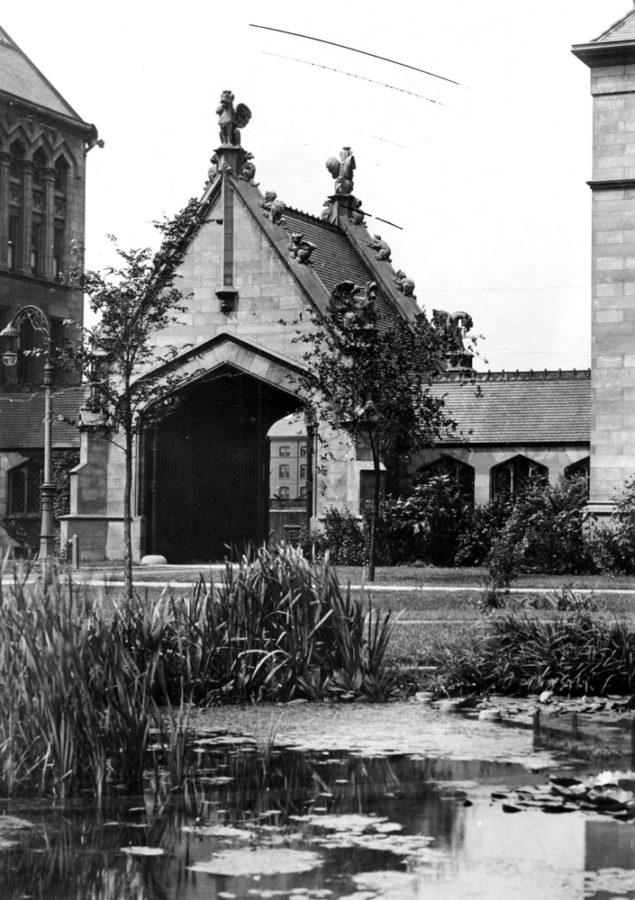While hurriedly scuttling between classes, meetings, and events, many students fail to notice the beautiful flora on campus. We at the University are truly blessed to be surrounded by such a diversity of plant life. In 1997 our campus was officially designated a botanic garden, and it has long been a priority of the University administration to incorporate more greenery into future stages of the campus master plan. The University deserves praise for its attention to the goal of bringing nature closer to the community, but Sunday’s Tu B’Shevat Seder highlighted the need to incorporate more plants native to the Chicagoland area into the overall plan.
The seder, from the Hebrew word for “order,” is best known with respect to its relationship to the Passover holiday, but traditionally there is also a seder held on Tu B’Shevat, the Jewish festival celebrating trees and the environment, during which participants partake in fruits, nuts, and grains. A number of groups—including Jewish Action, Chicago Friends of Israel, the Vegan Society, Green Campus Initiative, the Environmental Studies Program, and a bevy of others—came together Sunday to celebrate nature and its preservation. With readings from ancient Jewish texts on the environment and plenty of tasty vegan food, students discussed ways to help preserve Earth’s ecosystems.
Tu B’Shevat, much akin to Arbor Day, presents our community with the perfect opportunity to reflect on the state of our campus’s ecological well being. The University’s quadrangles play host to many species of plants and flowers from across the globe that were brought here by landscapers and botanists in order to teach and to adorn. There is nothing wrong with providing a home for these exotic plants, but at what price to those species native to Hyde Park? Before the encroachment of human settlement, this area was a marshland. Marsh flora thrived here for millennia and with it flourished native animal species as well (and I am not referring to our notoriously clever squirrels!). Almost all of the plant life we encounter everyday is not native to Hyde Park. Even the old oak trees scattered around campus, which the University website so proudly proclaims to predate the school, are a vestige of the planned landscaping from the 1893 World Columbian Exposition.
For the past four years, the Green Campus Initiative has spearheaded the creation of a native-plant garden adjoining Pick Hall, which now has over 15 species, and the group is looking to expand its efforts to reintroduce local flora to other parts of campus. Already a small area behind Rockefeller Chapel has been set aside for this purpose. This is a noble cause and would help students better understand the environment in which they live and grow intellectually. The University should not, by any means, remove the foreign plants or reduce their number; on the contrary, the collection of species from around the world enhances this campus’s beauty and prestige. It is important, however, that the administration officials in charge of executing the campus master plan incorporate more native plants into future green spaces.
There are several opportunities for native plant development that the administration should consider. The campus master plan calls for the redevelopment of Ellis Avenue as a new “spine,” becoming a focal axis for pedestrian traffic, linking the newly built structures near the Regenstein library, the soon-to-be-completed Interdivisional Research Building in the science quad, and the hospitals. Along the street would be open spaces and “gateways” where Ellis intersects with the Midway and with 55th Street. These plazas and sidewalk expansions could be a perfect venue for landscaping with native plants.
There has also been much talk in the past year about plans to expand the campus southward into the Woodlawn neighborhood with the addition of a new undergraduate dormitory near Burton-Judson Hall. As the administration contemplates its plans for construction south of the Midway, it should consider ways to incorporate native plants there as well. Perhaps the new dormitory could feature a native plant garden in which future generations of students will be able to park themselves when in need of a quiet place to study or ponder.
Tu B’Shevat teaches us to remember those aspects of nature on which we depend for survival and which, in turn, depend upon us for their protection. While most of us will not be living in Hyde Park long enough to see the campus master plan completed, what we sow will be reaped by future generations of students just like us, and, therefore, it is vital that we plan ahead so that they can benefit from a piece of Hyde Park’s ecological history. Through recycling, conservation, and reclamation we can better the world as a whole. But with a renewed commitment to reclaiming a small part of our own community’s natural ecosystem, we can make a difference right here.







